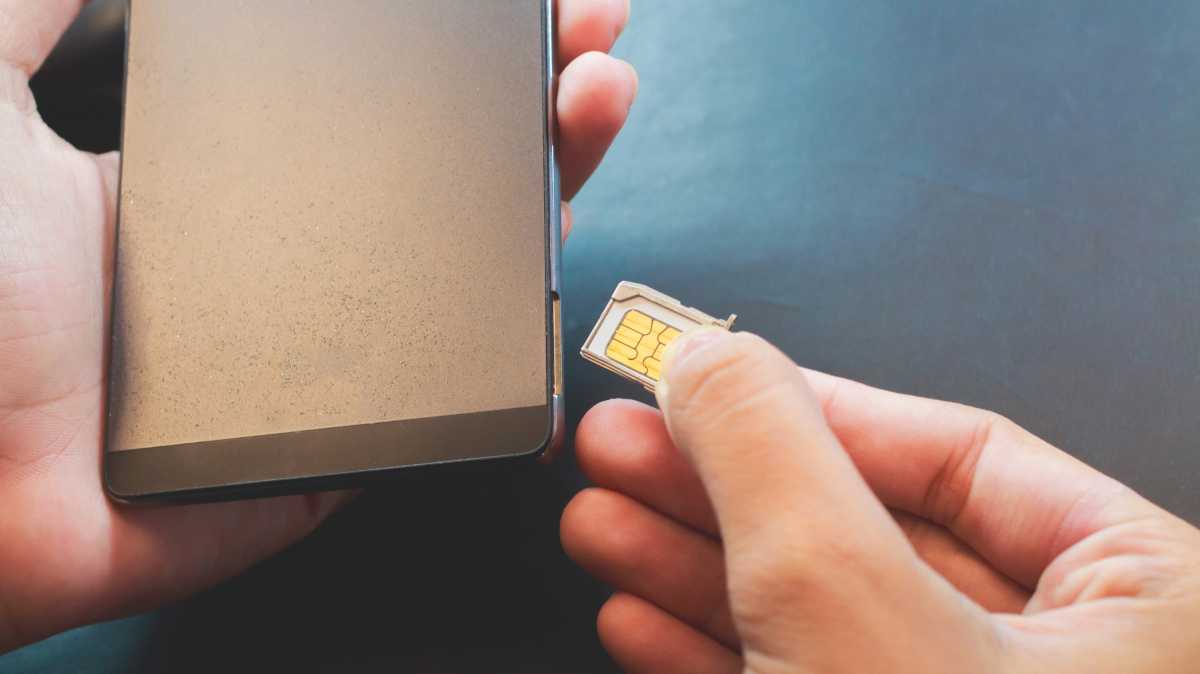Over the years, we’ve all grown used to those fiddly little SIM cards that are a necessary part of any phone.
Should you lose one or break it while switching to a new device, it’s a huge hassle – you need a replacement sent by your provider, which can take a few days and mean you’re without your phone number.
However, these inconveniences may soon become a thing of the past, as eSIM technology is fast becoming the industry standard.
Starting with the iPhone 14 series in 2022, Apple’s smartphones haven’t included a physical SIM card slot in the US. Android phones all still have it, but many offer an option for eSIM. Which begs the question…
What is an eSIM?
An eSIM stands for ’embedded SIM’ and serves as a digital substitute for traditional physical SIM cards, akin to how eBooks replace physical books and eTickets enable mobile boarding without needing printed tickets.
How to choose & start using an eSIM
In the UK you can request an eSIM from carriers such as EE, O2, Vodafone and Three, while the US customers can use AT&T, Verizon and T-Mobile.
Some MVNOs, or piggyback networks as they’re often known, offer eSIMs – but not all. If you’re uncertain about your carrier’s compatibility with eSIM, many providers offer online tools to determine compatibility.
To see what other benefits these companies have to offer in the UK, check out our guide to the best UK phone networks.

Dominik Tomaszewski / Foundry
If you travel regularly, Saily is a great alternative that works in over 150 countries around the world. It allows users to choose from various data plans, making it a companion for international travelers. With Saily, you can select from four different plans in most locations, ranging from 1GB to 20GB, with options for either a one-week or 30-day duration.
One of the standout features of Saily is its affordability. Prices vary depending on the selected country, with plans starting as low as $2.49. This flexibility ensures that you can find a plan that suits your data needs and budget, no matter where you are in the world.
You can check out Saily by downloading its app from both the App Store and Google Play. Once installed, Saily’s eSIM only needs to be set up once, eliminating the need to install a new eSIM for each country you visit. This means you can stay connected without the hassle of changing SIM cards every time you cross a border.
How much does an eSIM cost?
The cost of an eSIM varies based on the provider and the plan you choose.
Generally, eSIM plans can be more cost-effective than traditional roaming plans, especially for international use. Prices will depend on the amount of data and the duration of the plan.
How does an eSIM work?
Setting up an eSIM on compatible phones involves either pre-configuration by the provider or scanning a QR code provided in an eSIM pack.
The QR code is scanned with the device, connecting to the web to download eSIM information directly into the phone’s chip, eliminating the need for physical SIM cards or trays.

Stock Foto.Touch / Shutterstock
There’s also dual-SIM phones that allow you to have a physical SIM card from one phone network and an accompanying eSIM from another, with the option to switch between them manually.
This could come in handy if you travel abroad a lot or visit areas with poor coverage on certain networks.
What phones support an eSIM?
eSIM adoption in phones has been slow due to delayed acceptance by international carriers, leading manufacturers to include both physical SIM slots and eSIM capability. Flagship phones from companies like Apple, Google and Samsung were early adopters, but eSIM support is now extending to mid-range phones as well.
The most affordable eSIM models at the time of writing include the iPhone SE (2022), Google Pixel 8a and Samsung Galaxy A55, but there are several other good mid-range options that also support the technology.
Additionally, eSIM support is also found in many of the current best smartwatches, such as the Apple Watch Series 9, Google Pixel Watch 2 and Samsung Galaxy Watch 6, plus in other mobile devices such as tablets and laptops.
Why should I use an eSIM?
Despite being more limited than physical SIM cards in some ways, an eSIM offers some unique benefits.
If you like to move between providers regularly, an eSIM can make this easier, as there’s no need to wait for a physical card to arrive in the post before you can change networks – all it requires is scanning the new code into your device.
Of course, you’ll still need to ensure your old contract is fulfilled before you can switch, but doing so is easier than ever thanks to the text-to-switch initiative introduced in 2019 that also allows you to retain your phone number.
There’s also the benefit that the chip on your phone can store multiple eSIMs simultaneously, meaning you can have one for home and another for work or larger data use.

Tomek / Pixabay
However, aside from needing an up-to-date phone, those concerned with privacy will want to know that you can’t just remove an eSIM like you can a physical SIM, so it’s possible that cybercriminals could take advantage of this.
There is also the practicality of removing traditional SIM cards and putting them in another device, such as a basic phone, when you are at festivals or in the wilderness, where battery life is very valuable.
eSIM vs regular SIM card
When comparing eSIMs to traditional SIM cards, several benefits make eSIMs a more appealing choice:
- Convenience: eSIMs can be activated digitally, whereas physical SIM cards require you to visit a store or purchase them from vendors, which can be more costly and time-consuming.
- Flexibility: Regular SIM cards are limited to a single carrier profile. eSIMs, however, can store multiple profiles, giving you the flexibility to switch between different plans and carriers seamlessly.
- Remote activation: You can purchase and activate eSIM plans from the comfort of your home, whereas acquiring a physical SIM card often involves additional effort and potential risks of scams.
To learn more, see our separate article on advantages and disadvantages of eSIMs.














